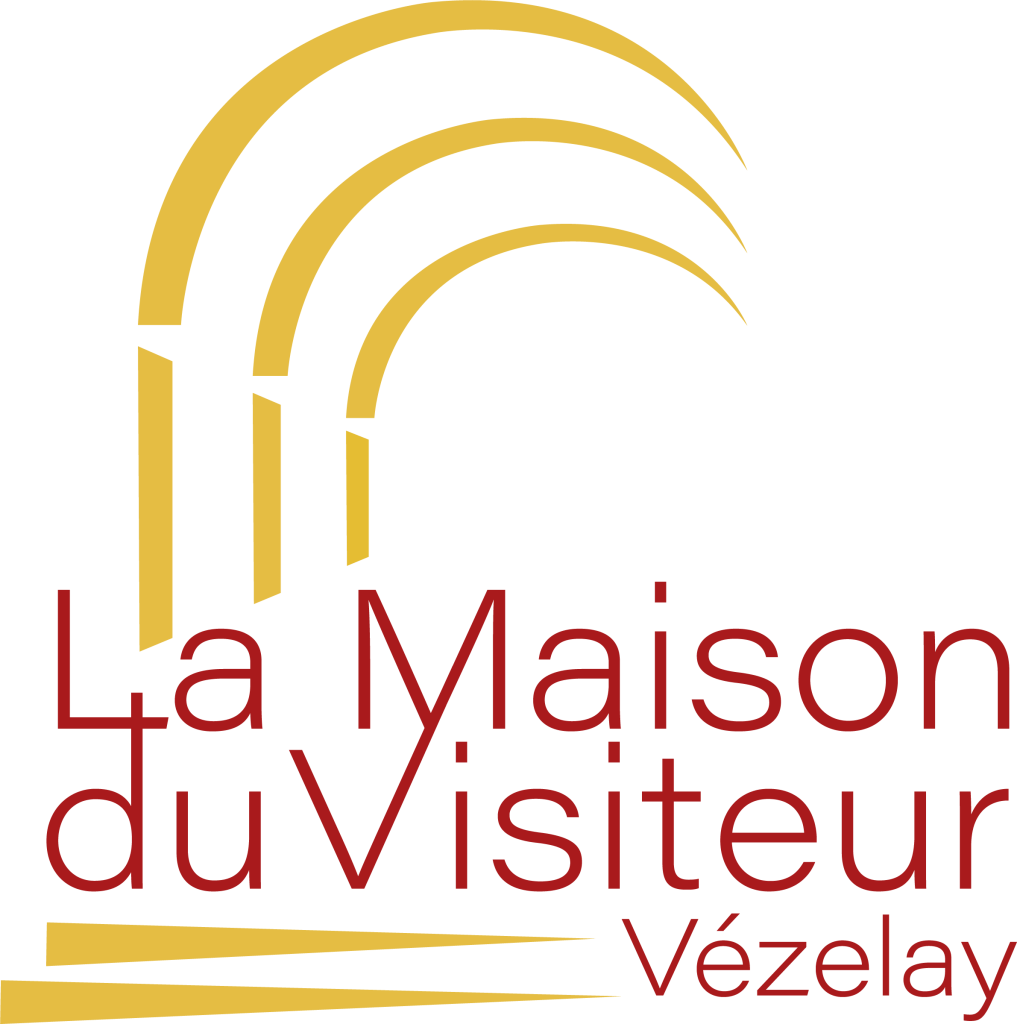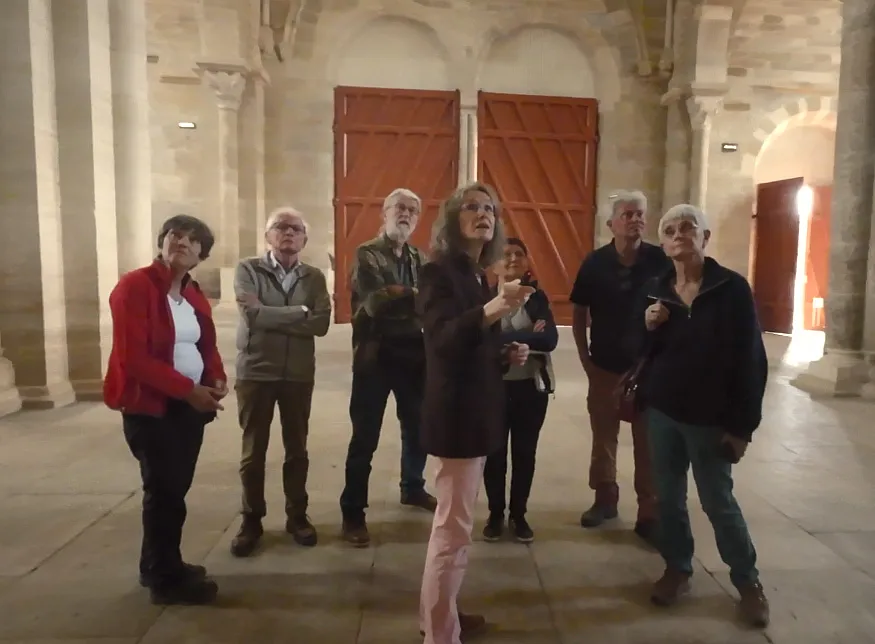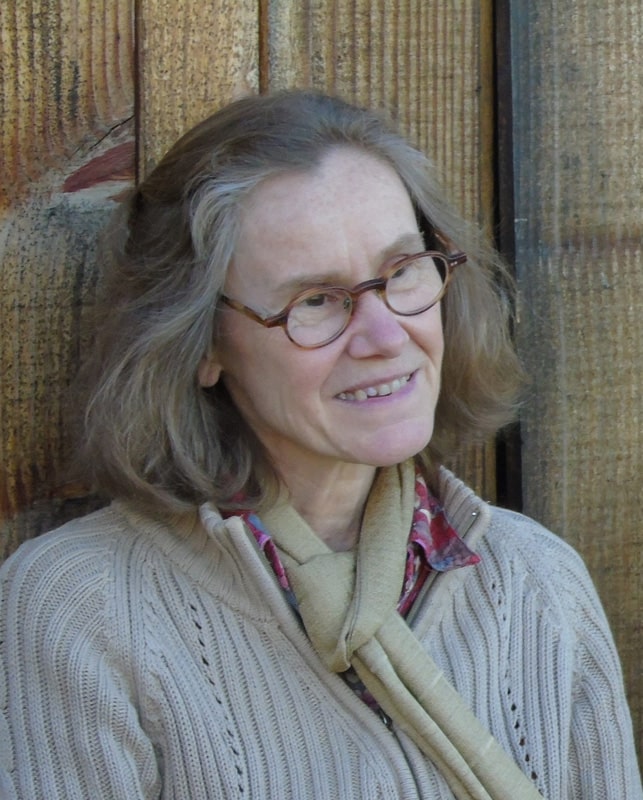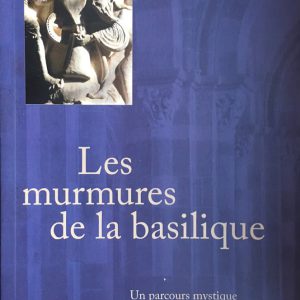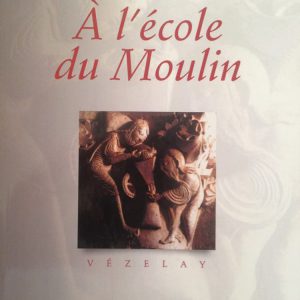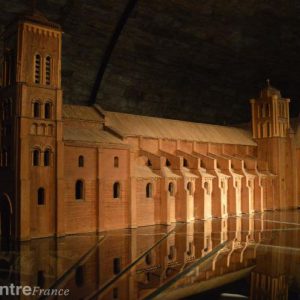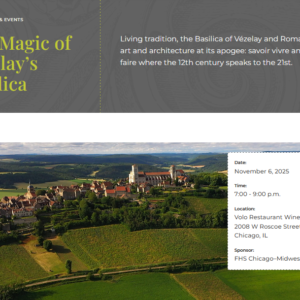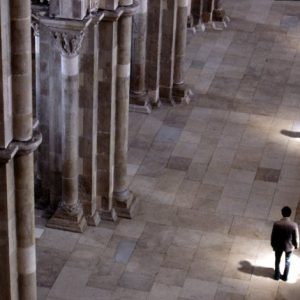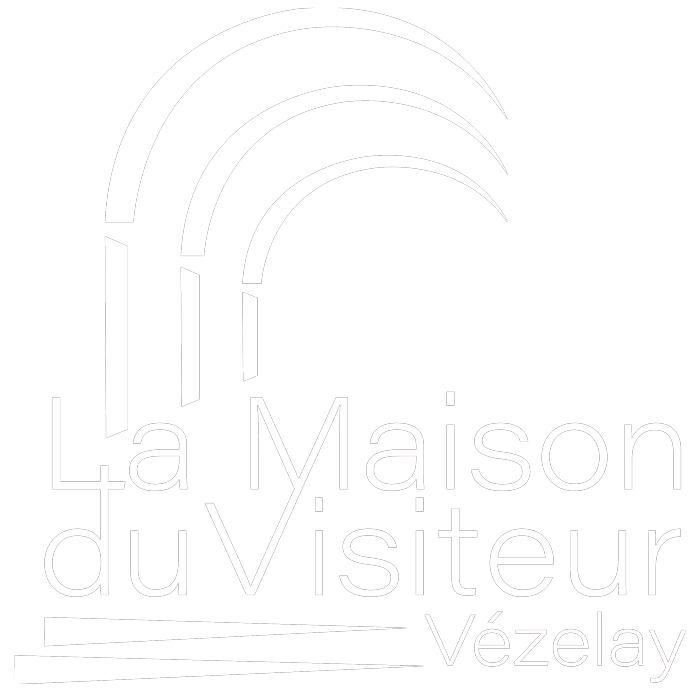Interview with Hélène Ramin by France Catholique to mark the release of the book A l'école du moulin" book
You wrote the foreword to Robert Pirault's book. Who is Robert Pirault?
Hélène Ramin Robert Pirault spent a few years in Vézelay as a Franciscan from 1962 to 1968, when the Basilica was undergoing restoration work, in particular on the upper room of an arm of the cloister that had become the Musée Lapidaire. Like an ant, he was fascinated by the slightest piece of debris that he could find among the rubble of the building site. He saved a few fragments of manuscripts and other objects from the 12th and 13th centuries and set to work trying to reconstruct the monastic life of this prosperous abbey at the time of the great pilgrimages.
Over the years, Robert Pirault had many opportunities to guide visitors to the Basilica. During the cold season and the silence of winter, he was one of those privileged visitors to La Madeleine who, by dint of looking at and studying the texts, were able to open up precious paths for interpreting the sculptures.
Convinced of the relevance of these stone words thanks to their symbolic content, he was keen to pass on his own work and in particular his approach to the famous Mystic Mill, perhaps the most beautiful capital in the complex.
In a word, Robert Pirault is an eternal questioner of the meaning we give to our present. Today, he lives in seclusion in the Corbières region.
Isn't Vézelay too often seen as a work of art rather than an act of worship?
Hélène Ramin Doesn't the beauty of a work of art open the heart, precisely where praise begins?
Yes, the Basilica of Vézelay is strikingly beautiful, and this very beauty inspires admiration, wonder and inner resonance.
It is at this point that a singular encounter takes place, allowing us to perceive the purpose intended by the monks and builders of the time: to make the stones sing in praise of the Creator.
What makes Vézelay unique?
Hélène Ramin : First of all, when we talk about Vézelay, we're talking about a whole, a hill, a village and an abbey. The uniqueness of the site undoubtedly lies in the harmony of the whole, a quality that is all the more remarkable given that it emerged during a history of violent conflict between the temporal and spiritual powers while the abbey was being built on the summit.
The coherence between the natural and built heritage is palpable: a hill that looks like a heavenly Jerusalem when, in the early hours of the morning on an autumn or spring day, a necklace of mist reveals its pile of houses surmounted by the great abbey church, while at the same moment the first beams of sunrise appear through the wide windows of the choir.
The coherence of the dialogue between plants and minerals is particularly evident on the ramparts, which encircle the town, reminding it of its past as a stronghold. So many connections that bring it closer to the City, where "all things are one", as the psalmist sings.
A 'whole package' that contains the best and the worst in a single life, a single community with its contradictory elements.
How can we fail to make the connection with the great Mary Magdalene to whom the Basilica is dedicated, a name and a saint that are enough to evoke a humanity shattered and transfigured by the light of the Risen Christ, as expressed by the remarkable luminous phenomena that radiate from the body of the building at Easter and the solstices.
Is this tent unique in France?
Hélène Ramin : Yes, at least in terms of the sculpted capitals that remain from this period. On the other hand, the theme of the mill, the grindstone, the grinding of grain or the grape press, developed naturally at the time in the context of the work essential to survival.
The theme of crushing is obviously powerfully evocative of Christ's passion and of all saving dereliction. Crushing is also about breaking through the bark of words to taste the fruit, the essence of the Word.
For example, as Robert Pirault develops, we find it imagined by Abbot Suger for a stained glass window in St Denis with the Apostle Paul turning the millstone.
At Vézelay, the action is a little different: it is the wheel and the cross-shaped mill that, occupying the central place in the composition, seem to be carrying out this revealing work of flour by themselves.
The figure to the right of the mill, probably the great prophet Moses, pours the grain of the Law into the mill's hopper while placing his foot on a sort of pedal, an action he seems to perform effortlessly as if he were participating in the movement of the wheel.
The image is powerful because it is a sign that a transformation is taking place with the consent of men and that, ultimately, it is less a question of the laborious work of transformation than of a revelation to be received, as Paul's bulging eyes show us, astonished by this providential manna pouring generously into the sack, the neck of which he holds with both hands so as not to lose anything.
What does it mean, and how can we "learn from the mill"?
Hélène Ramin This image, sculpted almost 900 years ago, is still relevant today because it contains symbols that help us to live: the crushing of grain to reveal what is new; the state of grace of the two men united in their common task; the style of the drapery with which they are clothed, insignia of their respective missions; the play of folds, manifestation of the common inspiration that carries them forward; the vegetation that frames them as if it were a natural part of the fruitfulness of their work...
The symbol acts like the hinges of a door opening towards ever greater interiority and therefore new understanding.. We never stop interpreting. Besides, as all the great wisdoms teach, who can contain the universe and stop the flow of time? This is precisely how the ancients wanted to offer those thirsting for meaning the means to immerse themselves in the ocean of life that is God, to paraphrase the historian Gilson.
The strength of Robert Pirault's book lies entirely in this humble immersion in the treasures contained in the biblical and patristic writings of the time. He takes his reader to a depth that explodes the topicality of the teaching sculpted before our eyes.
Instead of confining himself to theological exegesis, for example, that of the first covenant fulfilled by the newness of Christ, or the passage from the old to the new covenant, he simply proposes that his reader skim with him the apparent content in order to reach as far as possible the marrow of things and events, a progressive unveiling that gives the desire to leave all conformism behind and allow oneself to be invited to be "reborn from above".
Putting ourselves in the school of Le Moulin means letting ourselves be won over by the need for work that is priceless because it begins in our flesh.
